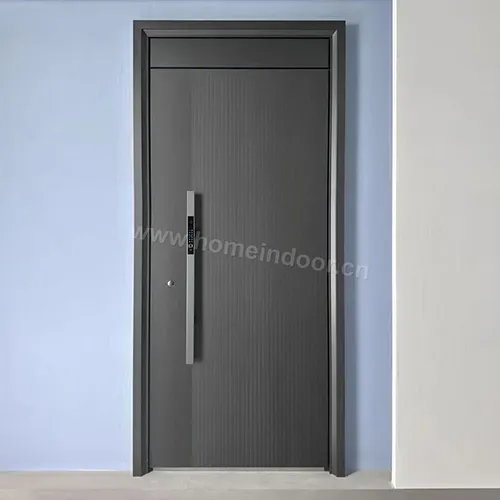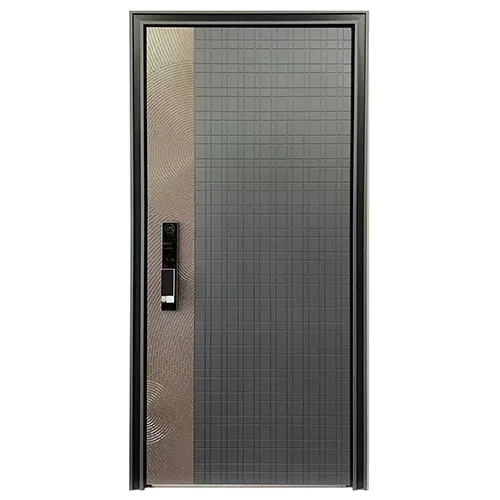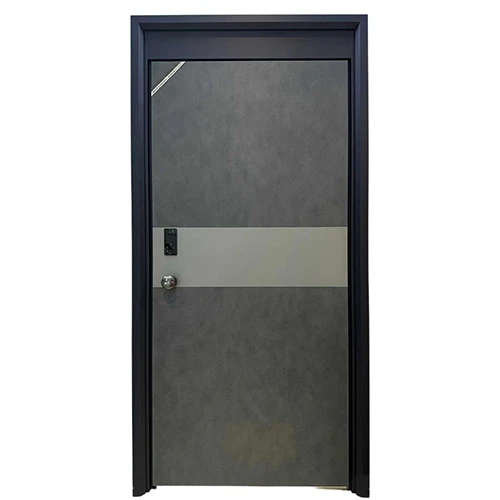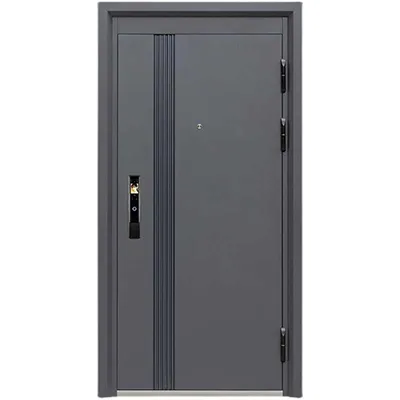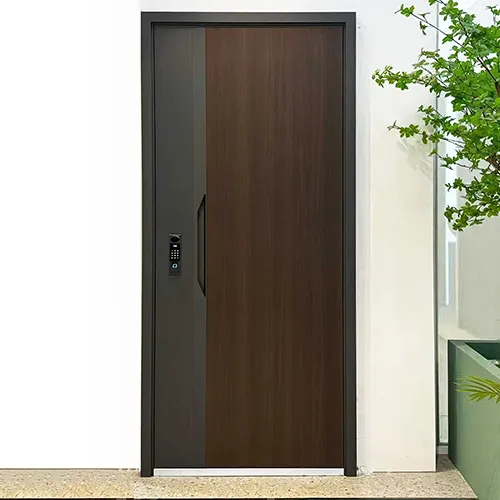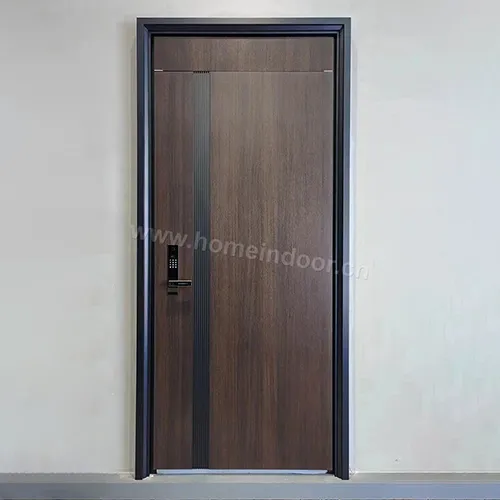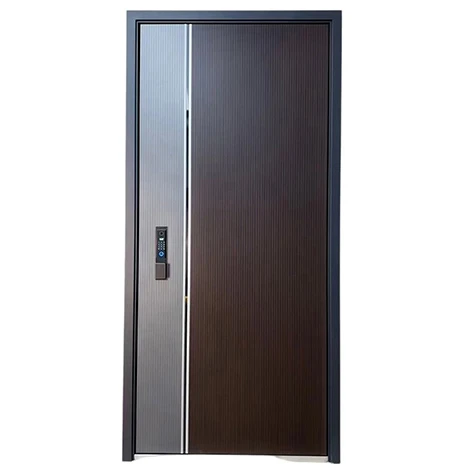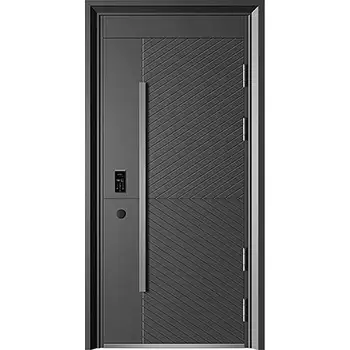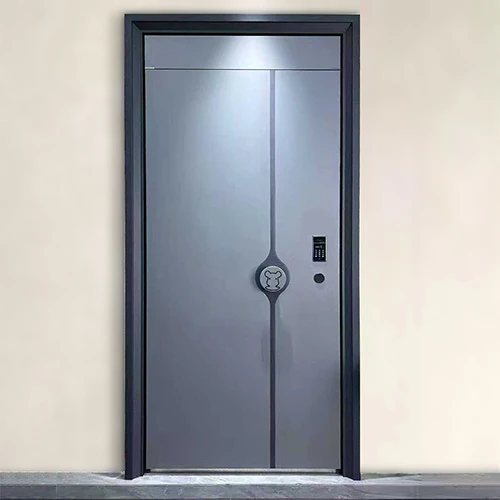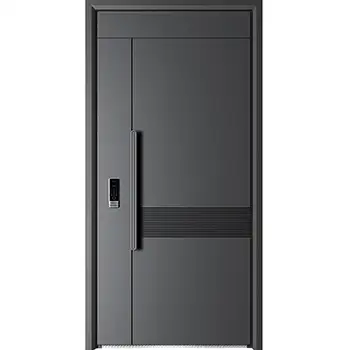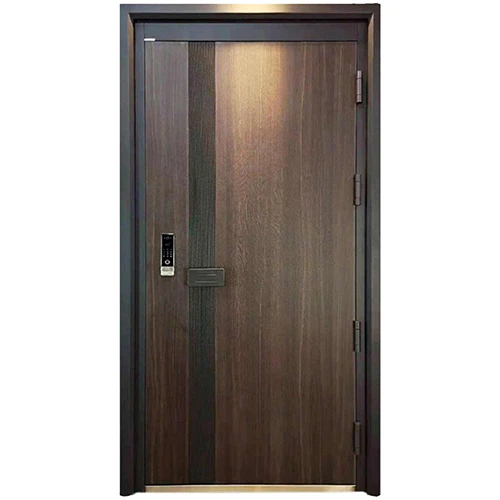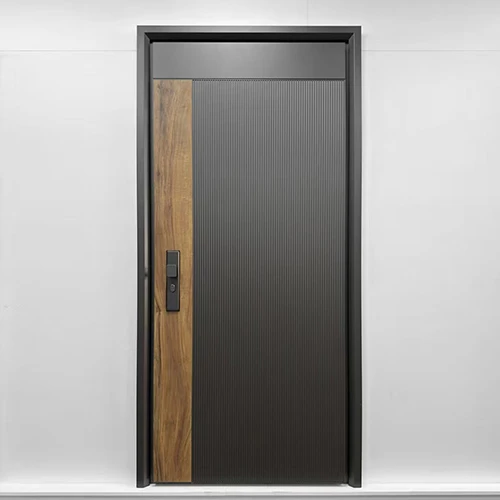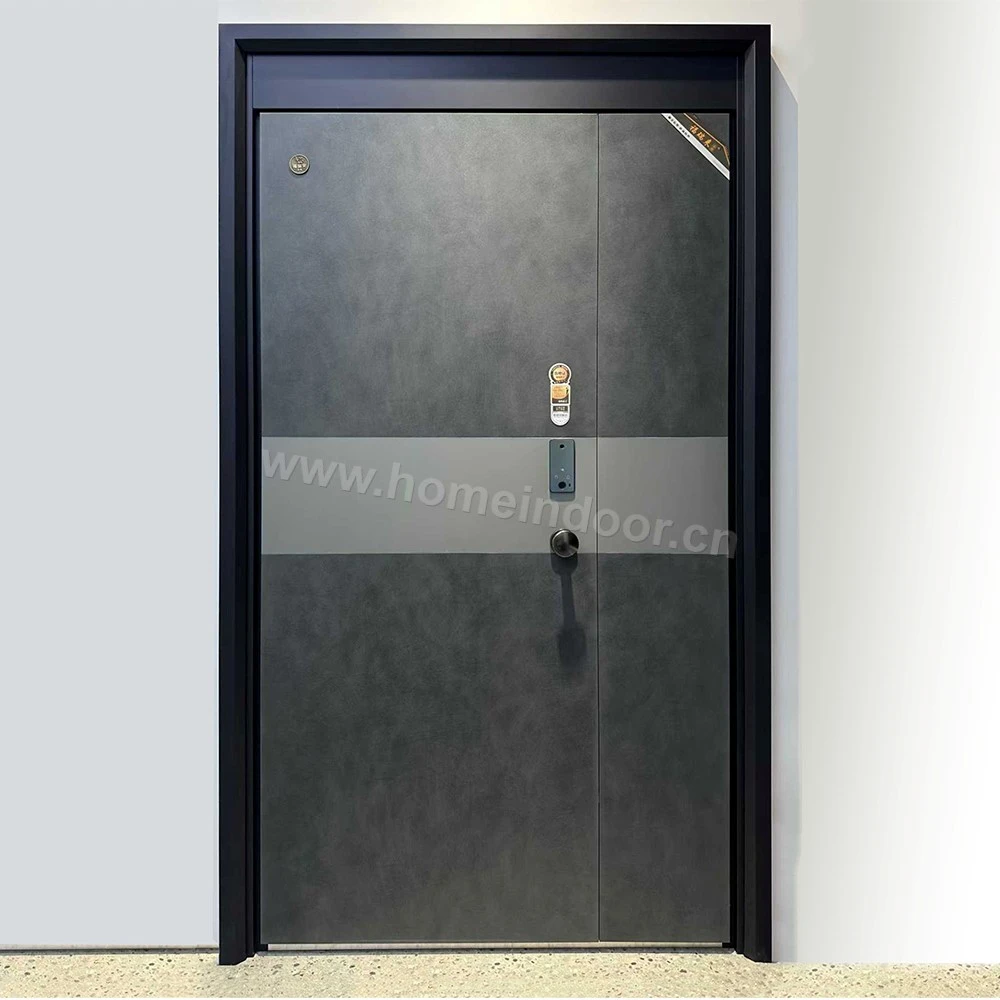
1. Choose stronger and thickner face panel material
The material and thickness of the door panel are critical in determining its resistance to physical force, tampering, and environmental conditions. Different materials offer different levels of security:MDF (Medium Density Fiberboard) face panel
- Pros: Cost-effective, good for standard residential applications.
- Cons: Less durable against forced entry compared to metal doors. MDF can be broken or kicked in easily.
- Thickness: 5mm~12mm
- Recommendation: normally it is used for steel-wood security door as face panel; should have a inner metal stiffener to enhance security
- Pros: Extremely durable, resistant to forced entry (kicks, pressure, and impact). Steel doors are ideal for high-security needs.
- Cons: Can be heavier and more expensive. Requires proper maintenance to avoid rusting.
- Thickness: 0.5~2mm
- Remark: max thick 2mm, if exceed to 1.5mm, can’t be bend to make a door; can’t further improved its strength by increase its thickness
- Pros: Lightweight, resistant to rust, and durable under most environmental conditions.
- Cons: Less resistant to impact than steel.
- Thickness: 2-30mm thickness
- Recommendation: max thick can reach 30mm, Combine aluminum with a steel core for a stronger, more secure door.
- Pros: Highly durable and resistant to corrosion. Offers good protection from environmental wear and tear.
- Cons: Slightly more expensive than aluminum and can be more prone to denting under heavy impact.
- Thickness: 1~2mm
- Recommendation: max thick can reach 2mm, Combine aluminum with a steel core for a stronger, more secure door.
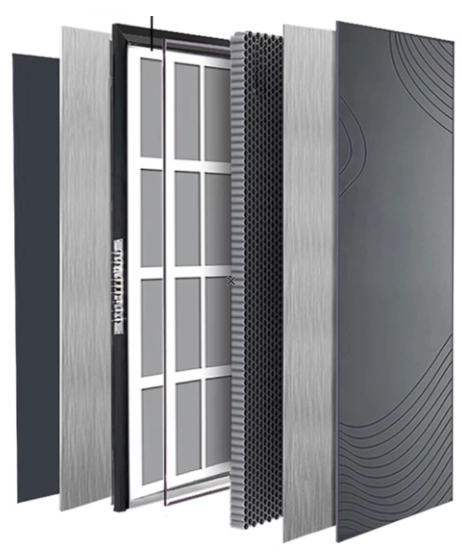
2. Add Door Inner Stiffener enhance security
A door stiffener is a reinforcement that helps distribute impact forces across the door. This is crucial in preventing the door from buckling or breaking under pressure.
- Material: Typically made of steel or aluminum.
- Placement: Stiffeners are placed inside the door panel to strengthen the structure. These should be spread out evenly and cover the entire height of the door for maximum impact resistance.
- Recommendation: Opt for a door with multiple stiffeners running vertically or horizontally. For higher security, consider a door with a reinforced internal frame as well.
3. Choose Multi-Point Lock System
A multi-point locking system is one of the most effective ways to increase door security. This system engages several locking points along the door, making it harder to breach.- How it works: Instead of a single deadbolt, the door locks at multiple deadbolt points (top, bottom, and sides), when door locking, the deadbolt which hidden inside of door will extend into prepared frame mortise, bonding door with frame, even door hinge is broken, door still can’t open or discharge from frame;the more deadbolt points, the safer will be, the quantity of deadbolt points can be customed as your requirement; normally 5-16 deadbolt points
- Recommendation: 5-16 point locking system for added security. Ensure the system uses high-quality hardware that cannot be easily bypassed.
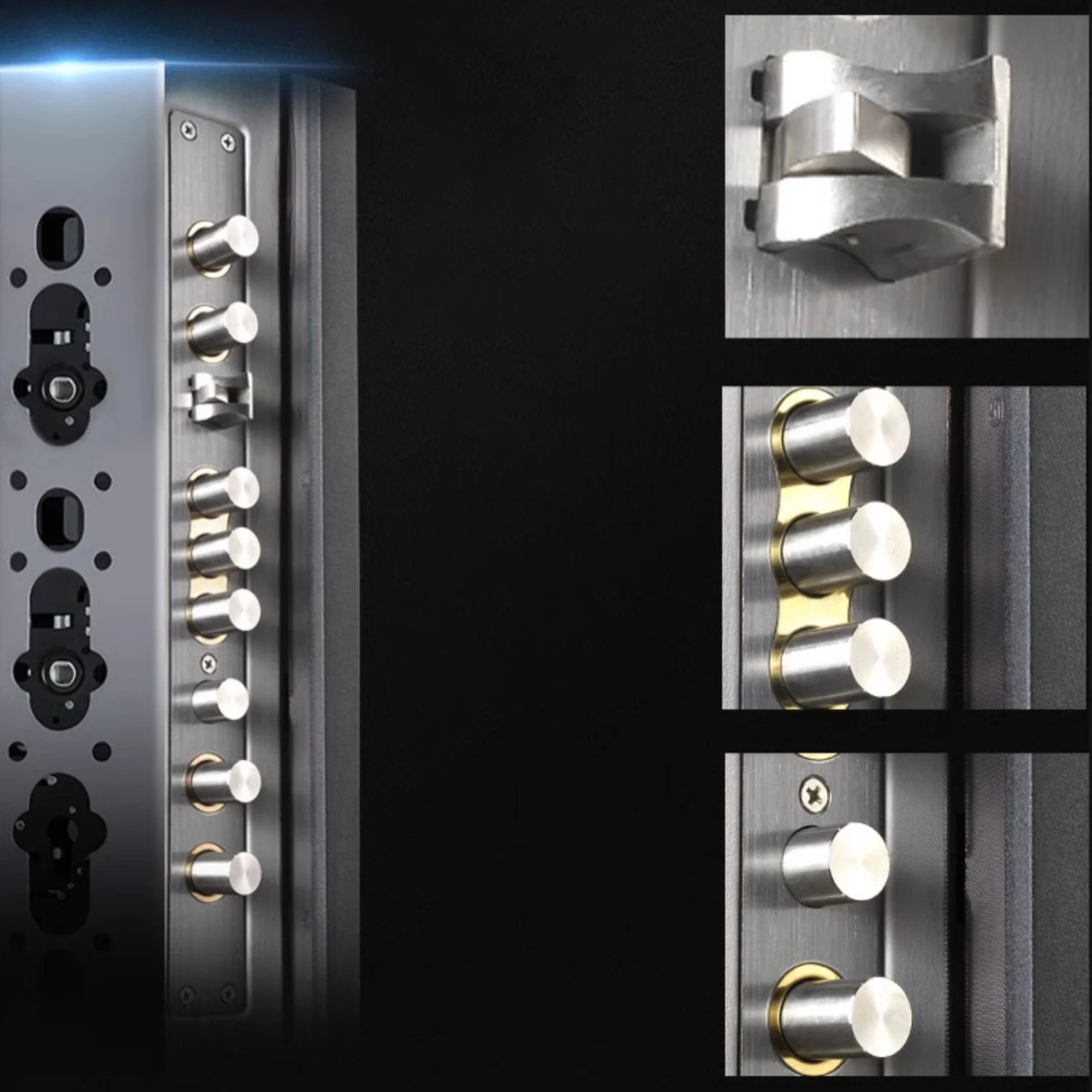
4. Choose High-grade Cylinder Grade
The lock cylinder is an essential part of the locking mechanism, and the grade of the cylinder can greatly impact security. Ensure the lock cylinder is resistant to common methods of bypassing, such as picking, bumping, or drilling.If don’t have a super secure cylinder, other security effort will be in vain-
Grades:
- Grade 1: Highest security, typically used in commercial applications.
- Grade 2: Medium security, commonly used in residential settings.
- Grade 3: Lower security, typically found in cheaper locks.
- Recommendation: Choose at least a Grade 1 lock cylinder for a residential or commercial door. Look for options that have anti-pick, anti-bump, and anti-drill features.
5. Smart Lock Control
Smart locks offer the convenience of keyless entry and the ability to monitor and control access remotely. They typically use Bluetooth, Wi-Fi, or biometric authentication (like fingerprint scanners).-
Features to look for:
- Remote Access: Being able to lock/unlock the door remotely via an app, especially useful for letting people in when you’re not home.
- Audit Trail: Track who enters the house and when.
- Two-Factor Authentication: Adds an extra layer of security beyond just a keypad or fingerprint.
- Fail-Safe Options: Ensure there’s a manual override (physical key) in case the battery dies or there’s a technical issue.
- Recommendation: Go for a smart lock with encryption standards like AES 128-bit to prevent hacking. Brands like August, Schlage, and Yale offer reliable options.
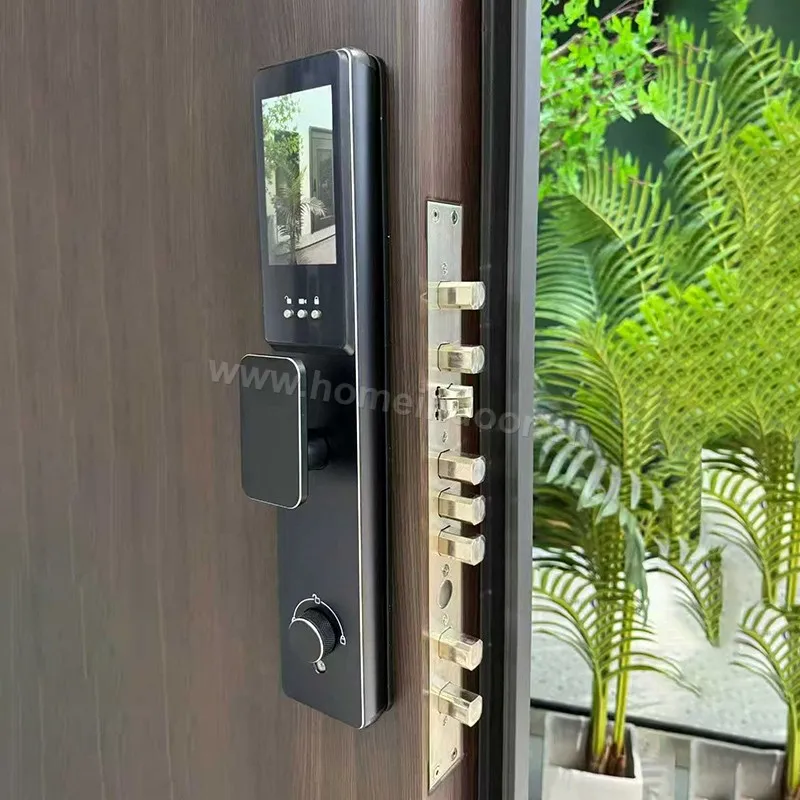
6. Remote Control
Remote control locks allow you to control your door remotely. This can be integrated into a smart home system or used with a standalone remote.-
Benefits:
- Convenience: No need to manually unlock or lock the door.
- Security: Can allow you to unlock your door from a distance if someone needs to enter, reducing the risk of giving keys to others.
- Remote Access: Can work with apps to control the door from anywhere.
- Recommendation: A keyless entry system with remote control access via a smartphone app or a dedicated remote is ideal. Ensure encryption protocols are in place to prevent unauthorized access.
7. Choose Reinforced Door Frame and firmly connect frame with wall:
A reinforced security door frame is typically constructed from hollow steel with a thickness ranging from 1.2mm to 2.0mm. The thicker the steel, the greater the strength and resistance to forced entry, making it ideal for high-security applications. To ensure a strong connection between the frame and the wall, the frame should be firmly anchored with heavy-duty bolts or anchors, preventing it from being easily pried loose. Once the frame is securely installed, an additional layer of security can be achieved by injecting cement paste into the hollow sections of the frame. This can be done through pre-drilled screw holes, allowing the cement to harden inside the frame and further increase its rigidity. The combination of durable steel and reinforced cement provides a much stronger and more secure barrier, making it highly effective in resisting tampering, forced entry, and damage.

